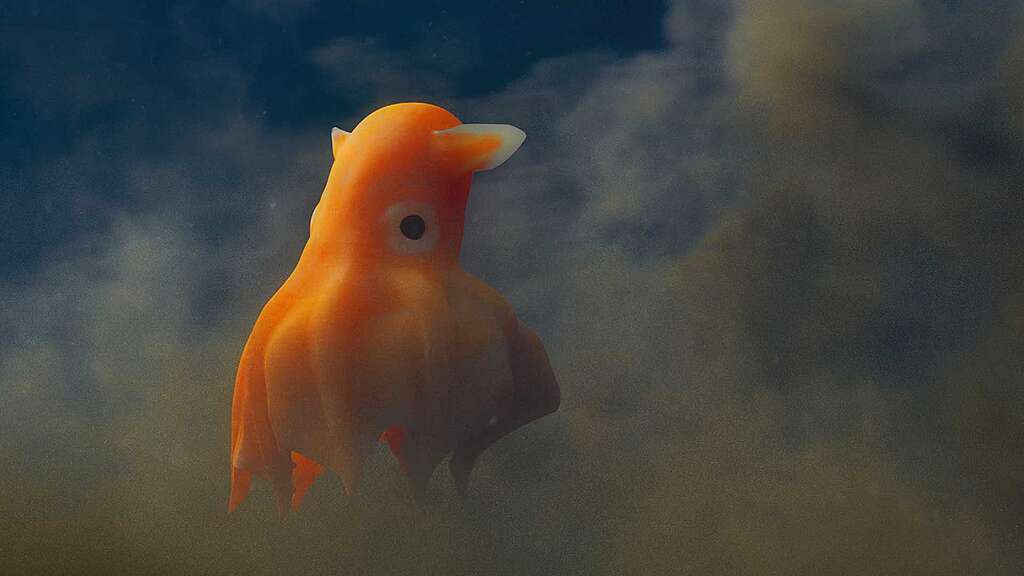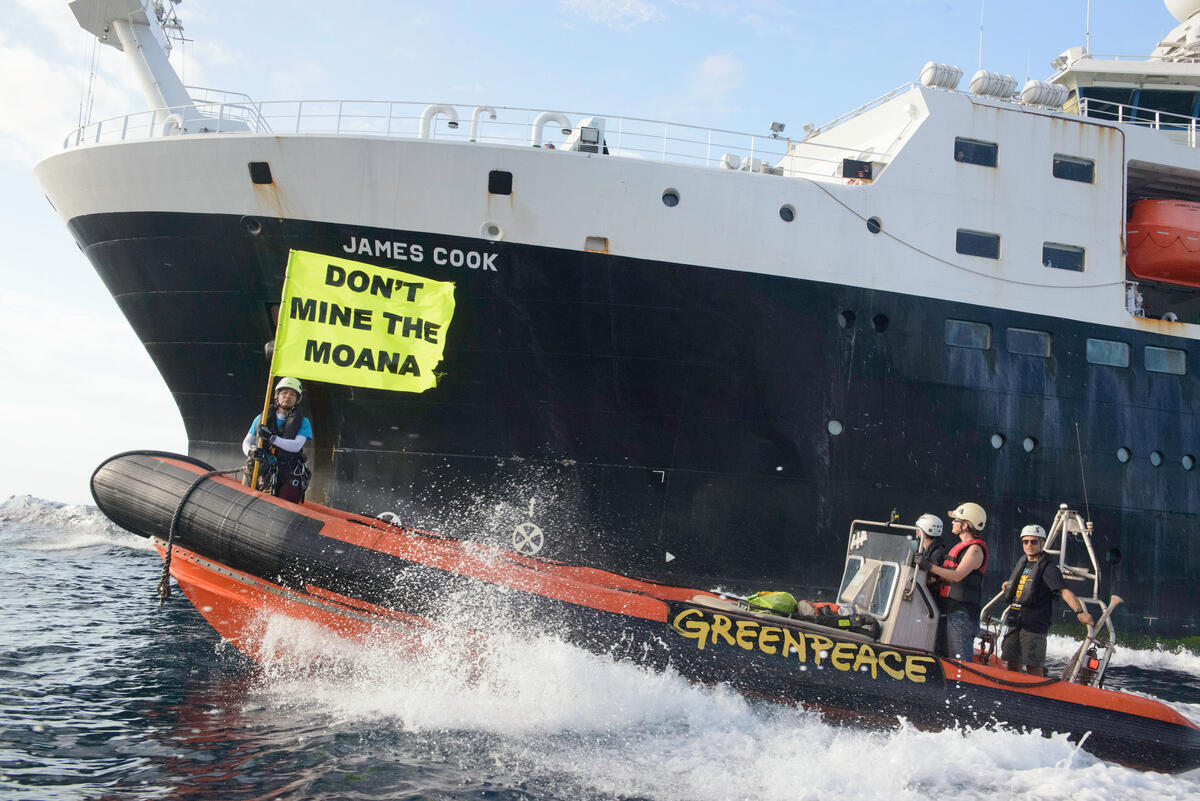I’ve been thinking a lot about futurism these past few weeks. And wondering what it is that makes dreaming without bounds so dang difficult. I participated in a strategic planning session for an org that I love recently. We were invited to imagine the organization 20 years in the future and folks struggled to actually think beyond the current ecosystems. I recalled another brainstorming session I found myself in a few years ago where the facilitator asked us to dream our greatest wishes for the neighborhood. My colleague and I drew an image of beloved community with collectively owned businesses, cooperative child care, and locally grown food. The state government representative at the table’s deepest desire for the neighborhood was an additional 100 section 8 vouchers. Why is it so hard for us to creatively imagine the future in expansive ways?
I care about this because I know that we need to creatively and collectively imagine, in detail, the world we want to see post climate crisis in order to build the path to that future. As Ayana Elizabeth Johnson, author of What If We Get It Right?, reminds us, “Addressing the climate crisis requires… a rethinking of the fundamental systems that we rely on.”
We live in a state of collective shock these days, full of grief and anger as we navigate from one unimaginable or unthinkable current event to the next. I know I am often just thinking about how to survive the day and the week. No wonder it is a challenge to imagine the future with optimism and creativity. I began to wonder what might be the scaffolding of conversation and thinking prompts that could open up our minds to possibility, to dreaming.
Futurist and game designer Jane McGonigal talks about mental time travel as a useful experiment and practice. She starts by asking us to imagine walking up tomorrow morning in vivid detail: where will you be, what will you be wearing, what will the temperature and the light be like, how will you be awakened, how will you feel physically and emotionally, what will be the first thing you do? Then imagine yourself walking up on a morning 10 years from tomorrow. Fill in all the same vivid details like you did before.
In the future scenarios we have to choose the details, choose what to imagine. And as we project ourselves into that future, we carry with us our hopes, our values, and all that we care about. This scenario building is exactly what we must do to build a just and abundant world beyond the climate crisis. As we build out the details of the world we want, we get to ask ourselves, ‘Is this the world I want to wake up in?’, ‘What do I need to be ready for this world?’, and ‘Should I try to change what I am doing today to make this future more or less likely?’.
We can only build what we can imagine. We can decide how the future will be different.
McGonigal invites us to engage in social mental time travel, to do this together, with the challenge to open our calendars and scroll 10 years ahead to the future. Put something in that calendar in 2035 — an event, a celebration, something. Then invite 4 or 5 others to that event, begin imagining together what that future day might hold. Invite me, I would love to be part of imagining the future with you.
Friends, life out here for climate justice non-profits is hard. Unlike during the first time the chief climate change denier was in office, support for our important work is shrinking. We are in the midst of an End of Fiscal Year fundraising campaign. Your gift enables us to continue inspiring educators and young people to dream about the future and co-create the solutions that bring us there. Thanks.

Susan Phillips
Executive Director
Illustration: João Queiroz
The post To Build a Beautiful World, You First Have to Imagine It appeared first on Climate Generation.
Climate Change
Leading scientists call for EPBC reforms to strengthen Great Barrier Reef protection
CANBERRA, Monday 27 October 2025 — More than 100 Australian scientists and researchers have called on the Labor Government to address deforestation in the new nature law reforms, warning that the impacts under the current Act “compound the damage caused by repeated mass bleaching events driven by climate change” to the Great Barrier Reef.
Environment Minister Murray Watt will soon table the draft bill to reform Australia’s broken nature law, the Environment Protection and Biodiversity Conservation (EPBC) Act. Leading environmental groups Greenpeace Australia Pacific, the Australian Marine Conservation Society, and the Australian Conservation Foundation coordinated the open letter with 112 leading Australian scientists, calling for the reforms to close loopholes in the Act that allow for rampant and unchecked deforestation, especially in the Great Barrier Reef catchment.
Read the letter here.
Elle Lawless, senior campaigner at Greenpeace Australia Pacific, said:
“Now is the time to act decisively for nature, and design a nature-first nature law that will do what it is set out to do: protect our environment. Toxic runoff from deforestation in the Great Barrier Reef catchment is poisoning the reef and suffocating the precious and fragile marine ecosystem. The Great Barrier Reef is a global icon, and we need a strong, robust EPBC Act that will safeguard and protect it. This is one of the most important pieces of legislation our country and our environment has and, done right, has the power to make serious and desperately needed positive changes to protect nature.”
Professor James Watson FQA, from UQ’s School of the Environment, said:
“Australia’s State of the Environment report, released by the federal government in 2021, shows that our oceans, rivers and wetlands are in serious decline. That report, and the Samuel review of the EPBC, make the point that there is a desperate need for stronger national nature laws that help protect these precious places for generations to come.
“Australia’s top environmental academics and experts have been sounding the alarm for decades: the large-scale destruction of Australia’s native woodlands, forests, wetlands and grasslands is the single biggest threat to our biodiversity. It’s driving an extinction crisis unlike anywhere else on Earth — and it’s threatening the Great Barrier Reef, one of the world’s seven natural wonders, right before our eyes.”
Continued mass deforestation threatens the Great Barrier Reef’s World Heritage status. In 2026, the World Heritage Committee will review Australia’s progress in protecting the reef and may consider placing it on the World Heritage in Danger list if major threats like deforestation are not addressed.
Recent figures from the Queensland Government show deforestation in Queensland is the worst in the nation and worsening under the current national environment law. Deforestation in the Great Barrier Reef catchment accounted for almost half (44%) of the state’s total clearing, an increase on the previous year.
Greenpeace Australia Pacific is calling for the EPBC reforms to meet four key tests:
- Stronger upfront nature protection to guide better decisions on big projects, including National Environmental Standards.
- An independent Environmental Protection Agency (EPA) to enforce the laws and make decisions about controversial projects at arm’s length from politics.
- Closing deforestation loopholes that allow for harmful industries to carry out mass bulldozing across Australia.
- Consideration of the climate impacts on nature from coal and gas mines when assessing projects for approvals.
“We will continue to engage with the government constructively in the reform process but also hold decision-makers to account over these critical tests,” Lawless said.
—ENDS—
Leading scientists call for EPBC reforms to strengthen Great Barrier Reef protection
Climate Change
Close Major Deforestation Loopholes in the EPBC Act
22 October 2025
The Hon Anthony Albanese MP
Prime Minister
Parliament House
CANBERRA ACT 2600
Sent via email
To the Prime Minister, Federal Environment Minister, and Members of the Albanese Government,
As researchers who study, document and work to recover Australia’s plants and animals, insects and ecosystems, we are keenly aware of the value of nature to Australians and the world.
Australia has one of the worst rates of deforestation globally. For every 100 hectares of native woodland cleared, about 2000 birds, 15,000 reptiles and 500 native mammals will die. As scientists and experts, we have sounded the alarm for more than 30 years that the large-scale destruction of native woodlands, forests, wetlands and grasslands was the single biggest threat to the nation’s biodiversity. That is still the case today, and it is driving an extinction crisis.
New figures show that Queensland continues to lead the nation in deforestation. The latest statewide landcover and trees study (SLATS) report shows that annually 44% of all deforestation in Queensland occurs in the Great Barrier Reef catchment areas, where over 140,000 hectares are bulldozed each year.
Deforestation in Great Barrier Reef catchments is devastating one of Australia’s most iconic natural wonders. When forests and bushland are bulldozed, erosion causes debris to wash into waterways, sending sediment, nutrients and pesticides into the Reef waters. This smothers coral, fuels crown-of-thorns starfish outbreaks, and reduces water quality. These impacts compound the damage caused by repeated mass bleaching events driven by climate change.
The Great Barrier Reef sustains precious marine life, supports local and global biodiversity, and underpins tourism economies and coastal communities that rely on its survival. Continued mass deforestation threatens these values and could jeopardise the Reef’s World Heritage status. In 2026 the World Heritage Committee will review Australia’s progress in protecting the Reef and may consider placing it on the World Heritage in Danger list, if key threats to the Reef, including deforestation, are not addressed.
This mass deforestation happens due to a loophole in the Environment Protection and Biodiversity Conservation (EPBC) Act, our national nature law. Exemptions allow deforestation to continue largely unregulated by the EPBC Act through a grandfathering clause from 2000 known as “continuous use”. Without meaningful reform, deforestation will continue to drive massive biodiversity loss. This loophole must be closed as part of the proposed EPBC Act reforms. The law is meant to safeguard our wildlife and our most precious places like the Great Barrier Reef. Please support closing major deforestation loopholes in the EPBC Act as an urgent and priority issue for the Federal Government.
Sincerely,
Professor James Watson, University of Queensland
Dr. Michelle Ward
Mandy Cheung
Mr Lachlan Cross
Timothy Ravasi
Gillian Rowan
Dr Graham R. Fulton, The University of Queensland
Dr Alison Peel
Dr James Richardson University of Queensland
Luke Emerson, University of Newcastle
Dr Hilary Pearl
Dr Tina Parkhurst
Dr Kerry Bridle
Dr Tracy Schultz, Senior Research Fellow, University of Queensland
Dr. Zachary Amir
Prof David M Watson, Gulbali Institute, CSU
Naomi Ploos van Amstel, PhD candidate
David Schoeman
Associate Professor Simone Blomberg, University of Queensland
Professor Euan Ritchie, Deakin University
Dr Ian Baird, Conservation Biologist
Paul Elton (ANU)
Melissa Billington
Hayden de Villiers
Professor Brett Murphy, Charles Darwin University
Professor Sarah Bekessy
Professor Anthony J. Richardson (University of Queensland)
Prof. Winnifred Louis, University of Queensland
Dr Yung En Chee, The University of Melbourne
Dr Jed Calvert, postdoctoral research fellow in wetland ecology, University of Queensland
A/Prof Daniel C Dunn, Centre for Biodiversity and Conservation Science, University of Queensland
Lincoln Kern, Ecologist
Professor Corey Bradshaw, Flinders University
Dr. Viviana Gonzalez, The University of Queensland
Prof. Helen Bostock
Dr Leslie Roberson
Bethany Kiss
Assoc. Prof Diana Fisher, UQ, and co-chair of the IUCN Marsupial and Monotreme Specialist Group
Dr Jacinta Humphrey, RMIT University
Professor Mathew Crowther
Christopher R. Dickman, Professor Emeritus, The University of Sydney
Fiona Hoegh-Guldberg, RMIT University
Dr Bertram Jenkins
Dr Daniela ParraFaundes
Dr Jessica Walsh
Dr. GABRIELLA scata – marine biologist, wildlife protector
Katherine Robertson
Professor Jane Williamson, Macquarie University
William F. Laurance, Distinguished Professor, James Cook University
A/Prof Deb Bower
Dr Leslie Roberson, University of Queensland
Ms Jasmine Hall, Senior Research Assistant in Coastal Wetland Biogeochemistry, Ecology and Management, Australian Rivers Institute, Griffith University
Dr Kita Ashman, Adjunct Research Associate, Charles Sturt University
Genevieve Newey
Matt Hayward
Jessie Moyses
Natalya Maitz, PhD Candidate, The University of Queensland
Christina Ritchie
Liana van Woesik, PhD Student, University of Queensland
Benjamin Lucas, PhD Researcher
A/Prof. Carissa Klein, The University of Queensland
Conrad Pratt, PhD Student, University of Queensland
Dr Ascelin Gordon, RMIT University
Professor Nicole Graham, The University of Sydney
Professor Murray Lee, University of Sydney Law School
Dr Tracy Schultz, Snr Research Fellow, University of Queensland
Libby Newton (PhD candidate, Sydney Law School)
Hannah Thomas, University of Queensland
Professor Richard Kingsford, Director of the Centre for Ecosystem Science, UNSW Sydney
Dr Anna Hopkins
Lena van Swinderen, PhD candidate at the University of Queensland
Professor Jodie Rummer, James Cook University
Dr Nita Lauren, Lecturer, RMIT University
Dr Christina Zdenek
Madeline Davey
Dr Rachel Killean, Sydney Law School
Dr. Sofía López-Cubillos
Dr Claire Larroux
Dr Alice Twomey, The University of Queensland
Zoe Gralton
Dr Robyn Gulliver
Ryan Borrett, Murdoch University
Adjunct Prof. Paul Lawrence, Griffith University, Brisbane Qld
Professor Susan Park, University of Sydney
Dr Holly Kirk, Curtin University
Deakin Distinguished Professor Marcel Klaassen
Dr Megan Evans, UNSW Canberra
Dr Amanda Irwin, The University of Sydney
Dr Keith Cardwell
Professor Don Driscoll, Deakin University
Susan Bengtson Nash
Distinguished Professor David Lindenmayer
Dr Madelyn Mangan, University of Queensland
Dr Isabella Smith
Geoff Lockwood
Dr Paula Peeters, Paperbark Writer
Prof Cynthia Riginos, University of Queensland
Dr. Sankar Subramanian
Associate Professor Zoe Richards
Dr Jessie Wells, The University of Melbourne
Professor Gretta Pecl AM, University of Tasmania
Dr April Reside, The University of Queensland
Oriana Licul-Milevoj (Ecologist)
Dr Yves-Marie Bozec, University of Queensland
Dr Julia Hazel
Dr Judit K. Szabo
Ana Ulloa
Dr Andreas Dietzel
Philip Spark – North West Ecological Services
Jonathan Freeman
Dr/ Mohamed Mohamed Rashad
Climate Change
The Ocean We’re Still Discovering
The recent discovery of Grimpoteuthis feitiana, a new species of Dumbo octopus found deep in the Pacific, is a reminder of something both humbling and urgent: we still know so little about the ocean that shapes our lives. This fragile, finned creature, gliding silently more than a kilometer beneath the waves, has lived in these waters long before we mapped them, and its story is only now coming to light.

What moves me most about this discovery is not just the Dumbo octopus itself, but how it bridges science and culture. Its name draws inspiration from the flying apsaras of China’s Dunhuang murals, those graceful, winged figures that seem to dance through air and imagination. It reminds me that the deep sea has always held a place in our collective human story, — not only in myths and art, but in the ways we relate to nature, learn from it, and find meaning within it.
Pasifika connection to the ocean
For us in the Pacific, the ocean is more than a body of water. It is our identity, our culture, our history. Our ancestors read the seas to navigate, to survive, to connect communities scattered across islands. Discoveries like this Dumbo octopus awaken something deeper in me, — a sense that the ocean is alive with stories and wisdom we are only beginning to rediscover. And with that understanding comes a responsibility to protect it.

Each new species like the Dumbo octopus, each glimpse into the deep, is a warning as much as it is a wonder. The creatures of the abyss live slow, deliberate lives in fragile ecosystems, shaped by balance and patience. Deep-sea mining, pollution, and climate change threaten to erase them before we even learn their names. Protecting the Pacific’s oceans is not an abstract act of conservation; it is an act of cultural preservation, of love for our home, and for the unseen life that sustains us all.
Grimpoteuthis feitiana is more than a scientific discovery. It is a reminder that the ocean is still full of life, mystery, and wisdom — and that we have a duty to ensure these depths remain wild, healthy, and alive, for us and for the generations yet to come.
Reflection by Raeed Ali
Pacific Community Mobiliser
-
Climate Change2 years ago
Spanish-language misinformation on renewable energy spreads online, report shows
-
Climate Change3 months ago
Guest post: Why China is still building new coal – and when it might stop
-
Climate Change Videos2 years ago
The toxic gas flares fuelling Nigeria’s climate change – BBC News
-

 Greenhouse Gases1 year ago
Greenhouse Gases1 year ago嘉宾来稿:满足中国增长的用电需求 光伏加储能“比新建煤电更实惠”
-
Greenhouse Gases3 months ago
Guest post: Why China is still building new coal – and when it might stop
-

 Climate Change1 year ago
Climate Change1 year ago嘉宾来稿:满足中国增长的用电需求 光伏加储能“比新建煤电更实惠”
-

 Carbon Footprint2 years ago
Carbon Footprint2 years agoUS SEC’s Climate Disclosure Rules Spur Renewed Interest in Carbon Credits
-
Renewable Energy4 months ago
US Grid Strain, Possible Allete Sale



